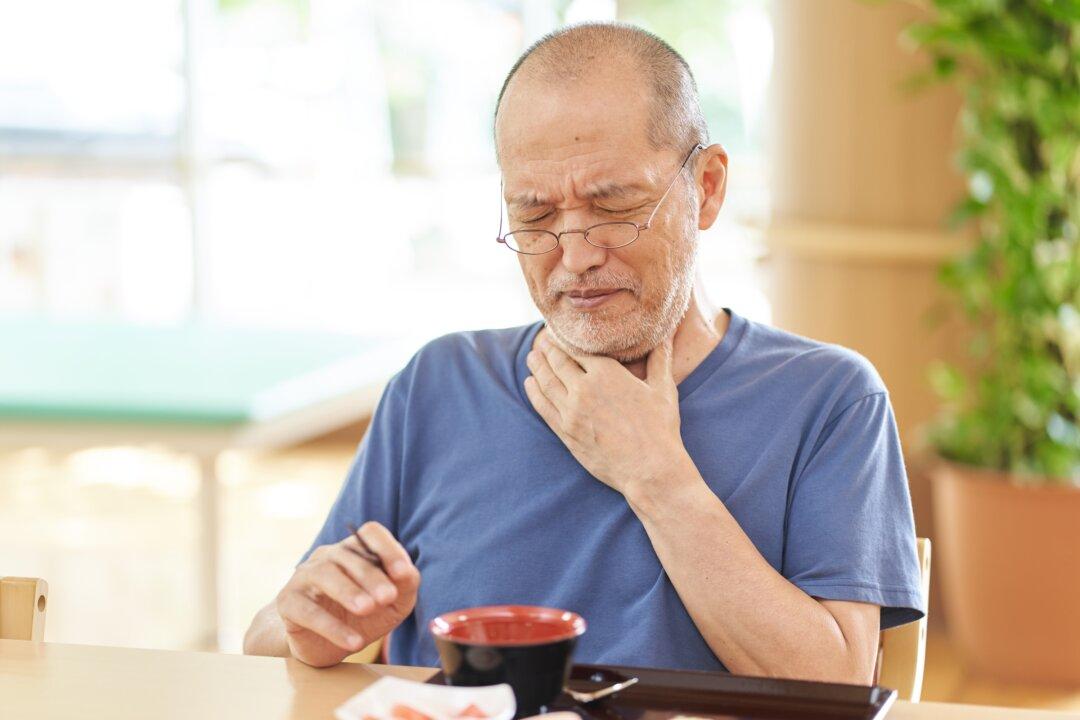Sudden Onset of Stroke
Dong noted that in ancient China, TCM understood the concept of stroke. It was believed to be related to wind, with the disease progressing rapidly and suddenly, making it unpredictable and unavoidable—a person might appear normal and then suddenly collapse. In modern medicine, stroke refers to a cerebrovascular condition that typically occurs abruptly and progresses swiftly.Strokes can be divided into two main types: hemorrhagic and ischemic.
A hemorrhagic stroke occurs when a blood vessel in the brain ruptures, causing a blood clot that compresses brain cells and disrupts the blood supply. It can be further classified into intracerebral hemorrhage and subarachnoid hemorrhage.
9 Key Warning Signs of a Stroke
Stroke symptoms can vary due to individual differences in health conditions. Dong has identified the following as potential warning signs of a stroke:Recommended Foods for Stroke Prevention
Diet is closely linked to our health. Dong noted that conditions such as stroke, high blood pressure, diabetes, and heart disease, which are now very common, are closely related to dietary habits. Therefore, the best way to prevent a stroke is to follow a healthy diet. He recommends the following foods for stroke prevention:1. Garlic
Garlic has detoxifying properties and helps to “unclog” blood vessels. Purple garlic and solo garlic are particularly beneficial for health. Solo garlic consists of only one large clove, and it is relatively difficult to find in the market.2. Onion
Onions are rich in flavonols, a type of flavonoid known for its powerful health benefits. Research has shown that flavonoid-rich foods possess anti-inflammatory, anti-atherogenic, and antithrombotic properties. Regular consumption of these foods, in moderation, has been linked to a reduced risk of ischemic stroke, making onions and other flavonoid-rich foods valuable additions to a heart-healthy diet.3. Shiitake Mushrooms
Research has shown that the bio-components in shiitake mushrooms can scavenge free radicals and inhibit the oxidation of low-density lipoproteins. This suggests that shiitake mushrooms possess anti-atherosclerotic properties and can be used as a dietary treatment for cardiovascular diseases.4. Wheat
Wheat is an essential whole grain. A 2017 study published in the journal Stroke found that higher consumption of whole grain cereals and bran was significantly associated with a reduced risk of ischemic stroke. Whole grains can help lower blood pressure, provide antioxidant benefits, and improve lipid levels, glucose, and insulin metabolism, thereby supporting cardiometabolic health.5. Corn
Corn is a high-fiber food with excellent nutritional value. Research has shown that eating corn regularly can reduce the risk of chronic diseases such as cardiovascular disease, Type 2 diabetes, and obesity, while also improving digestive health.6. Brown Rice
White rice, while a popular staple, falls short in nutritional value compared to its whole-grain counterpart, brown rice. The refining process removes the outer layer of white rice, stripping away essential nutrients. In contrast, brown rice retains this layer, offering significantly higher levels of fiber.7. Green tea
Catechins in green tea can help improve body metabolism. A study found that drinking green tea is inversely associated with the risk of stroke in middle-aged and older men. The study also highlighted that the catechins in green tea have antioxidant, anti-inflammatory, and antithrombotic effects.8. Longevity Tea With Tian Ma
Ingredients:- Gastrodia elata (Tian Ma)
- Solomon’s seal (Yu Zhu)
- Tuber fleeceflower (He Shou Wu)
- Red sage (Dan Shen)
- Mulberry leaves (Sang Ye)
- 1 liter water
This tea helps promote blood circulation, stabilize blood pressure, and prevent atherosclerosis.
- Inhibiting inflammation
- Suppressing cell apoptosis
- Regulating autophagy
- Improving metabolism
- Reducing oxidative stress
- Modulate gut microbiota
Acupressure for Stroke Prevention
Dr. Dong introduces two acupoints that are beneficial for health. Regularly stimulating these acupoints can improve blood circulation and help prevent strokes.According to traditional Chinese medicine (TCM), meridians are the channels through which energy flows in the human body. They are responsible for transporting qi and blood—the fundamental substances that constitute and sustain human life—throughout the body.
Along the meridians are specific points known as acupoints, which possess unique functions. By stimulating the corresponding acupoints through techniques like acupuncture and massage, it is possible to treat diseases related to specific organs.


Case Study: Emergency Stroke Treatment in TCM
Dong recounted an incident involving an 86-year-old friend who suffered a stroke while urinating at night. By the time Dong arrived, the friend was already unconscious. He observed that, although the blood vessels had not ruptured, there was significant congestion and the blood was highly concentrated.After examining the patient’s head, Dong found that blood had pooled at the top. He quickly took steps to relieve the pressure to prevent the potential rupture of blood vessels. Dong performed bloodletting at the Baihui acupoint on the top of the head, releasing seven or eight drops of dark blood. He also needled the Yongquan acupoint on the sole of the foot. This combined approach effectively alleviated the patient’s symptoms and provided significant relief.








